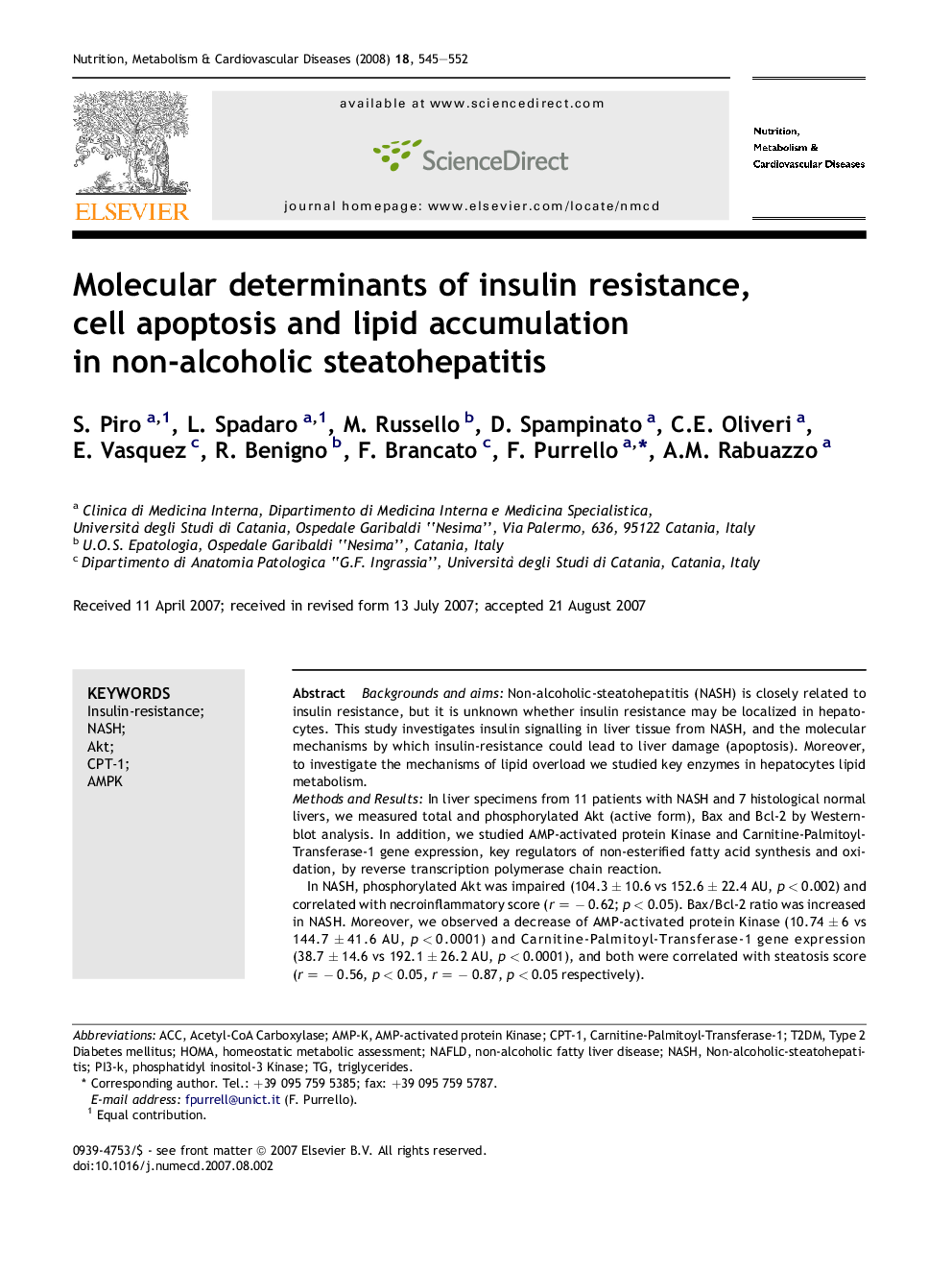| Article ID | Journal | Published Year | Pages | File Type |
|---|---|---|---|---|
| 3002577 | Nutrition, Metabolism and Cardiovascular Diseases | 2008 | 8 Pages |
Backgrounds and aimsNon-alcoholic-steatohepatitis (NASH) is closely related to insulin resistance, but it is unknown whether insulin resistance may be localized in hepatocytes. This study investigates insulin signalling in liver tissue from NASH, and the molecular mechanisms by which insulin-resistance could lead to liver damage (apoptosis). Moreover, to investigate the mechanisms of lipid overload we studied key enzymes in hepatocytes lipid metabolism.Methods and ResultsIn liver specimens from 11 patients with NASH and 7 histological normal livers, we measured total and phosphorylated Akt (active form), Bax and Bcl-2 by Western-blot analysis. In addition, we studied AMP-activated protein Kinase and Carnitine-Palmitoyl-Transferase-1 gene expression, key regulators of non-esterified fatty acid synthesis and oxidation, by reverse transcription polymerase chain reaction.In NASH, phosphorylated Akt was impaired (104.3 ± 10.6 vs 152.6 ± 22.4 AU, p < 0.002) and correlated with necroinflammatory score (r = − 0.62; p < 0.05). Bax/Bcl-2 ratio was increased in NASH. Moreover, we observed a decrease of AMP-activated protein Kinase (10.74 ± 6 vs 144.7 ± 41.6 AU, p < 0.0001) and Carnitine-Palmitoyl-Transferase-1 gene expression (38.7 ± 14.6 vs 192.1 ± 26.2 AU, p < 0.0001), and both were correlated with steatosis score (r = − 0.56, p < 0.05, r = − 0.87, p < 0.05 respectively).ConclusionsAkt, a key molecule of insulin signalling and cell apoptosis is impaired in NASH, suggesting an important role of hepatic insulin resistance in liver failure. Moreover, decreased non-esterified fatty acid oxidation may cause hepatic lipid overload.
